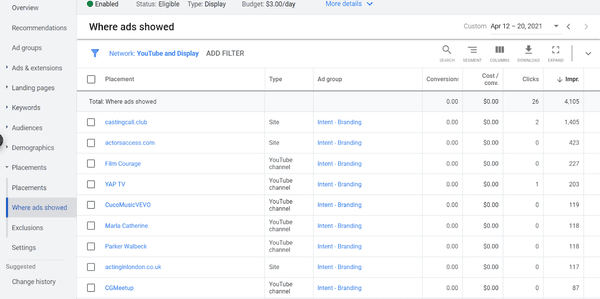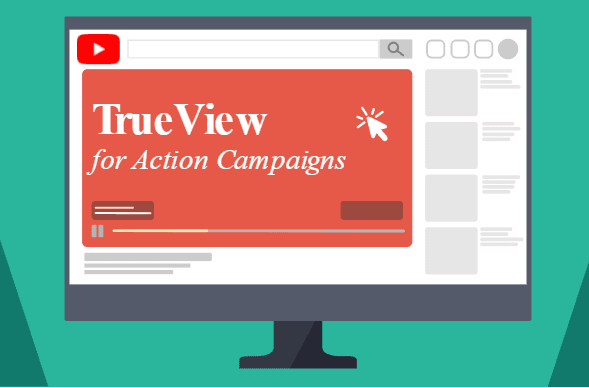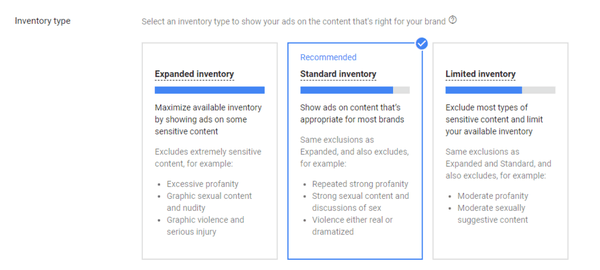Your Guide to YouTube Advertising
YouTube is a growing ad platform with increasing importance to advertisers across all types of businesses.
YouTube is a mix of a search engine, streaming video service, and social media platform. Consumers use YouTube to connect with brands, search for answers to their questions, research products, and watch posted content.
Not convinced? Here are some statistics that show YouTube’s massive online presence:
-
74% of adults in the US use YouTube (that’s more than Facebook) and spend an average of 41.9 minutes on YouTube daily
-
YouTube is the second-most visited website in the world (after Google)
-
YouTube is also the second largest search engine in the world (after Google)
-
37% of all website traffic belongs to YouTube
-
50.9% of B2B decision makers use YouTube for research
-
70% of viewers bought from a brand after seeing it on YouTube
If your brand is not on YouTube, you are missing out on a huge portion of the worldwide audience, some that you may not be reaching elsewhere.
WHAT’S INCLUDED:
- How to Show Ads on YouTube
- Types of Ads on YouTube
- YouTube Advertising Targeting Options
- How to Optimize Your YouTube Ads for Results
How to Show Ads on YouTube
YouTube’s ad and targeting capabilities have grown significantly over the past 2-3 years, and Google continues to introduce new types of YouTube advertising options, with many currently in beta testing. So, how can you take advantage of this opportunity for your business?
Are You Already Advertising on YouTube?
If you are running ads in Google campaigns, you are likely already showing some ads on YouTube. Surprised? YouTube is technically a part of Google’s Display Network and will show if you are using responsive display ads in Google Display campaigns.
YouTube is also a placement for Discovery campaigns, App campaigns, and Smart Shopping campaigns on Google.
To find out how much traffic your current Display ads are getting on YouTube and their performance, you can look into the “Where ads showed” section of the “Placements” report in Google Ads. In this report, you can filter by network and compare YouTube vs. Display placements and performance.
However, while your ads will be showing on YouTube with these types of campaigns, they will usually show as image or text ads, unless you have video assets added to your responsive display ads.
They will sometimes show as a banner ad below the video that people are watching on their phone or in the search results. These types of ads are not usually as effective as video ads on YouTube.
For best results, it’s recommended that you create specific ads and campaigns targeted at the YouTube platform and audience.
Types of Ads on YouTube
To specifically target audiences on YouTube and create video ads to reach them, you need to create a Video campaign on Google Ads.
There are many different types of Video campaigns. Some focus on brand awareness and reach (bumper, instream, and outstream video ads). In these campaigns, the goal is to get as many people as possible to watch your video content.
Other campaigns focus on product and brand consideration, where the goal is to get engagement with your video content.
However, the most effective type of YouTube campaign for most advertisers is a TrueView for Action campaign. This type of campaign uses short videos to try to get people to click to the advertiser’s website and complete an action (like purchasing a product or filling out a lead form).
TrueView for Action ads have a clear call to action and a large button to encourage the user to click away from YouTube. They are similar to Conversion or Link Click Facebook Ads, meant to drive people to your website from the ad. These ads don’t only drive awareness; they can also drive valuable conversions.
For conversion-focused campaigns, you basically have one ad option. You are able to upload videos that will play as in-stream video ads that are skippable after 5 seconds of viewing.
The video can be 12 seconds to 6 minutes long and needs to be posted to your YouTube channel (but it can be set as unlisted so it is not searchable). You then use the link from your channel to create the ad. In addition to the video, you have a personalized Call-to-Action text that will appear on the button, a short headline, and a display URL that will be a part of the ad.
Your business name will be automatically pulled from your YouTube channel name. You can also upload a separate static banner that will show below the video after your ad is shown or you can let YouTube automatically pull a static image from your video for you.
YouTube Advertising Targeting Options
Targeting options on YouTube are very similar to Google Display targeting, including:
-
Demographics (as long as your ads are not in the credit, employment, or housing industries)
-
Affinity audiences
-
In-Market audiences
-
Life Events
-
Remarketing audiences
-
Similar audiences
-
Custom audiences
-
Combined audiences
These options can all be targeted on YouTube, and are created based on Google’s knowledge of each users’ search history and online behavior. Advertisers can also place ads on certain types of YouTube channels by targeting by Keyword themes, Topics, or specific Placements, instead of targeting by user behavior.
There are some audiences specific to YouTube, like targeting people subscribed to your YouTube channel or people similar to those who are subscribed to your channel. With placement targeting, you are also able to put your ads on certain YouTube channels, specific YouTube videos, or YouTube video lineups around certain themes.
How to Optimize Your YouTube Ads for Results
Has your company run YouTube Ads in the past or are running them now and just not getting results? YouTube ads can (and should!) be optimized to make your ads more likely to show to the right audience and get a response.
YouTube Ads have gone through a lot of changes in the last year to make it easier to target a specific audience and get conversions. If your business tested YouTube before 2020 and did not get results, it may be due to the lack of targeting options and the ads that were designed to only increase awareness during that time. It is worthwhile to test YouTube again with much more detailed custom audiences that you have found successful on Google Display.
Targeting strategy on YouTube is similar to Google Display. You want to take advantage of custom audiences to narrow the focus on your best audience.
While the two platforms are similar, YouTube ads may cost more than Display ads on a cost-per-click basis. On Google Display, you pay when someone clicks your ad and goes to your website. On YouTube, you pay when someone views your ad for 30 seconds or to the end of when they click on your ad.
Given this distinction, you could end up paying for people who never end up on your website. You will want to monitor how much your cost per click and cost per view is in your YouTube campaigns and make adjustments to budgets accordingly.
Another way to make sure that your videos are showing to the right audience is through exclusions. There are three types of audience exclusions that are recommended on YouTube.
The first is Brand Safety exclusions. YouTube offers different levels of exclusions where you can control the types of content that your ads show on, based on their safety ratings. It is also recommended to keep a running list of websites and YouTube channels that your brand finds problematic to upload as a manual exclusion list.
The second exclusion category is current clients, employees, and recent converters. As with all Google campaigns, you want to make sure that you are not wasting your ad money on people that are already clients, employees, or just people who recently filled out a lead form on your website.
The third exclusion category is more specific to YouTube. You want to make sure that your ads are not being shown to children (who cannot purchase your products). Children make up a large part of the YouTube audience and, if not excluded, you will see cartoons and children’s channels making up a portion of your YouTube placements.
Unfortunately, Google does not have a direct exclusion for children themselves, since people under 18 years old are not allowed to create their own Google/YouTube login. Instead, you will want to exclude children by excluding Topics related to children and excluding Keywords including “kids”, “children”, “cartoons”, etc. You will then want to review the channels that your ads are showing on regularly and manually exclude certain channels that are still showing your ads to the wrong audience.
One of the best ways to optimize your YouTube ad campaigns is to optimize your video creative. Most people are going to see the first 5 seconds of your video and then switch back to what they were watching. In those first 5 seconds, you need to introduce your brand & product, describe the main benefit to the user, and have a strong call-to-action.
Those first 5 seconds should be memorable and able to be viewed as a standalone video. Then, for the rest of the video, you can go into more detail. But you should recognize that 90% of your audience will likely skip at the 5-second mark.
You should also have multiple video ads in each ad group and should refresh them with new content regularly. Especially if you have a small audience and large budget, your audience is likely to see your YouTube ads many times a week while they are spending hours watching videos on the platform.
They will get tired of the same ad over and over and experience ad fatigue. Your ads will have diminishing returns over time. YouTube creative should be changed at least as frequently as social media creative on Facebook. Rule of thumb is about once per month, although it can vary based on the size of your audience, size of your budget, average frequency of the ad, and how many ads you have running at the same time.
Another way to optimize your YouTube performance is to exclude TV screens as a Device if you are trying to drive action on your website. Many people watch YouTube on their TV but cannot click on ads and go to a website to make a purchase from their TV.
They also can’t skip ads on their TV screen, meaning that you will get charged when they watch 30 seconds of your video. TV screens can be an effective placement for awareness ads but are not right for campaigns to drive action.
The effect of YouTube ads on your audience can be difficult to measure, similar to Display ads.
YouTube ads can increase future searches for your brand and organic and direct purchases on your website. If the customer is not logged into Google for all of these steps or uses different devices, the conversion will not be able to be tracked back to the YouTube ad.
If you are a lead generation company that ties leads to UTM parameters, you will only be able to track leads when someone directly clicks on a video ad and fills out the form immediately on the site. Other, less direct conversions may not be counted toward that campaign.
So it may be easy to say that the YouTube campaign is not driving direct conversions. But, if you pause the campaign and see a drop in brand, organic, and direct purchases–you’ll know that some users were influenced by the video ads.
Work with an expert on YouTube Ads and see results. Perfect Search Media has the tools to help you stay at the cutting edge of video ad technology on YouTube. Learn more here!


Emily Lutz is from Kalispell, Montana and has been camping more times than she can count. She geeks out over musicals and the TV show Firefly (yes, she’s on some chat sites). Before joining Perfect Search, Emily was a zookeeper for ten years.




